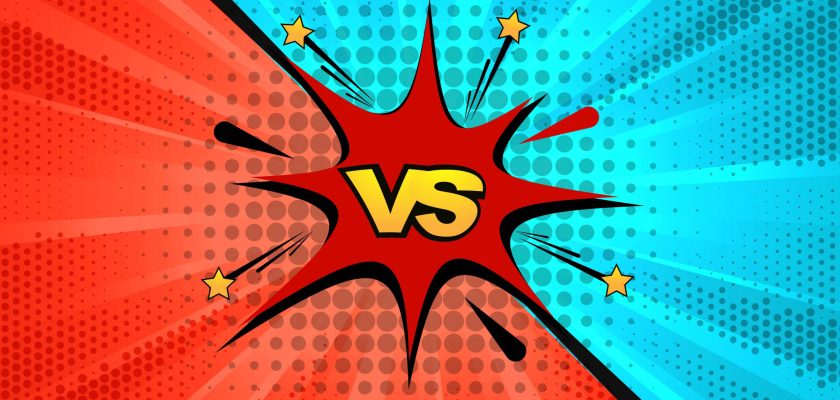There are a lot of differences between Anime and cartoons, but the only similarity is that both look the same visually.
The online debate of Anime vs. cartoons is a heated debate that happens every time between anime fans vs. non-anime fans, making everyone wonder about the difference between Anime and cartoons.
While both are animation, there is a difference between Anime and cartoons that can only be understood by people who have watched at least one Anime.
I will say that while growing up, everyone watched cartoons, so we know what cartoons have to offer; few have experienced what Anime has to offer to its audience, so because of animation, these people think of Anime as cartoons.
Let’s understand this way..
One Person has never drunk buttermilk in his life, but he has drunk milk several times, and he refuses to drink buttermilk whenever someone tells him that buttermilk and milk are different; he says no, both are the same because of their color.
(Now think of Buttermilk as Anime and Milk as Cartoon)
Anime and Cartoons look the same visually but have different things to offer to the audience and different kinds of audiences.
To all those Anime vs. cartoon debates, I will showcase how Anime differs from cartoons and what makes them stand apart from cartoons.
Learn about the Difference Between Anime and Cartoons:
1. Visuals
2. Themes
3. Storyline
4. Characters
5. Fans

https://www.freepik.com/free-vector/colorful-comic-book-background_1124697.htm#query=anime%20vs%20cartoons&position=38&from_view=search&track=robertav1_2_sidr
1. Visuals:
Cartoons:
Cartoon has light and simplified visuals that make the viewer lightly enjoy the show or movie they are watching and have fun watching it.
Anime:
Anime has dark exaggerated, choppy, and fluid visuals to make viewers get involved in the show or movie they are watching and experience the roller coaster ride of the show.
2. Themes:
Cartoon:
Cartoon focuses more on giving a fun ride with comedy to make the audience feel light and relaxed while watching it because cartoon has below 10 years audience.
Anime:
Anime themes focus on romance, horror, science fiction, comedy, mystery, sports, and other darker subjects that matter to adults, which is why Anime has a fan group of above 16 Years of people.
3. Storyline:
Cartoon:
Cartoon has no exact storyline or a little bit of storyline, which makes it no matter from which episode you got into the cartoon, you can easily understand what’s going on in that movie or show.
Anime:
Anime focuses more on the storyline, and Anime do care about each character’s story and how that character has developed throughout the series.
4. Characters:
Cartoon:
In cartoons, characters are portrayed as good characters or bad characters; we can not see or rarely see any character development or any major changes in any cartoon characters. For example, ninja hathori, tom and jerry, parman, etc.
Anime:
IN anime characters, we see major changes and character developments happening to the favorite characters of our favorite series, as we have seen in Naruto, death note, or Onepiece.
5. Fans:
Cartoon:
Cartoons have a fan base below the 10-12 age limit that wants a fun and relaxed environment around them. Cartoons are fun and casual to watch for kids, which is why we see a lot of kids get involved in cartoons because of the humor and fun it has to offer to their audience. Cartoons are easily predictable for grown audiences.
Anime:
Anime fans are above the age of 16 because of the stories, character development, emotions, dark theme, mysteries, and different kinds of genre anime offers to the audience. We can say that anime targets both children and adults. Anime has so many mysteries and uniqueness that fans create fan theories about the shows.
Anime vs. Cartoon:
Anime has a wide appeal, but it is often aimed toward an older demographic because of the mature subject matter it often explores. Conversely, cartoons are meant for a younger demographic and center around fun and humor.
Anime:
The term “anime” refers to a specific subgenre of Japanese animation. An abbreviation for “animation,” or “anime” for short.
These cartoons have lively characters, vivid visuals, and fanciful plots. The first known examples of anime date back to the beginning of the nineteenth century. However, the distinctive anime art style didn’t emerge until Osamu Tezuka’s works in the 1960s. There is now a sizable following both at home and abroad.
Anime is easily recognizable by its striking visual effects. There is a lot of attention to visual detail in Anime, both in the art and the story. Characters’ faces, body proportions, and clothing are rendered with a higher degree of realism than is typical in cartoons.
In contrast to cartoon characters, who tend to have round faces and big eyes, anime protagonists tend to have long, lean bodies. Compared to cartoons, anime characters tend to be more appealing and lifelike. Anime accomplishes this in part through the use of a plethora of color variants and tints. It is notable. However, that movement animation is given less attention in Anime.
Cartoon:
A cartoon is a film in which the images are not of real people or places but of a series of drawings created using animation techniques. Cartoons are aimed squarely toward the under-13 set. Since their primary purpose is to make kids laugh, the humor and gags in them reflect that.
Adventures and comical situations are the main focus. Cartoon figures typically have exaggerated features and unrealistic proportions. These elements contribute to the overall comedic effect. Cartoons, however, make greater use of motion than Anime.
Cartoons are typically easier and shorter to make than Anime. Cartoons frequently include human, animal, or juvenile protagonists. Tom and Jerry, Scooby-Doo, Garfield, Mickey Mouse, etc., are just a few instances of well-known cartoon characters.

